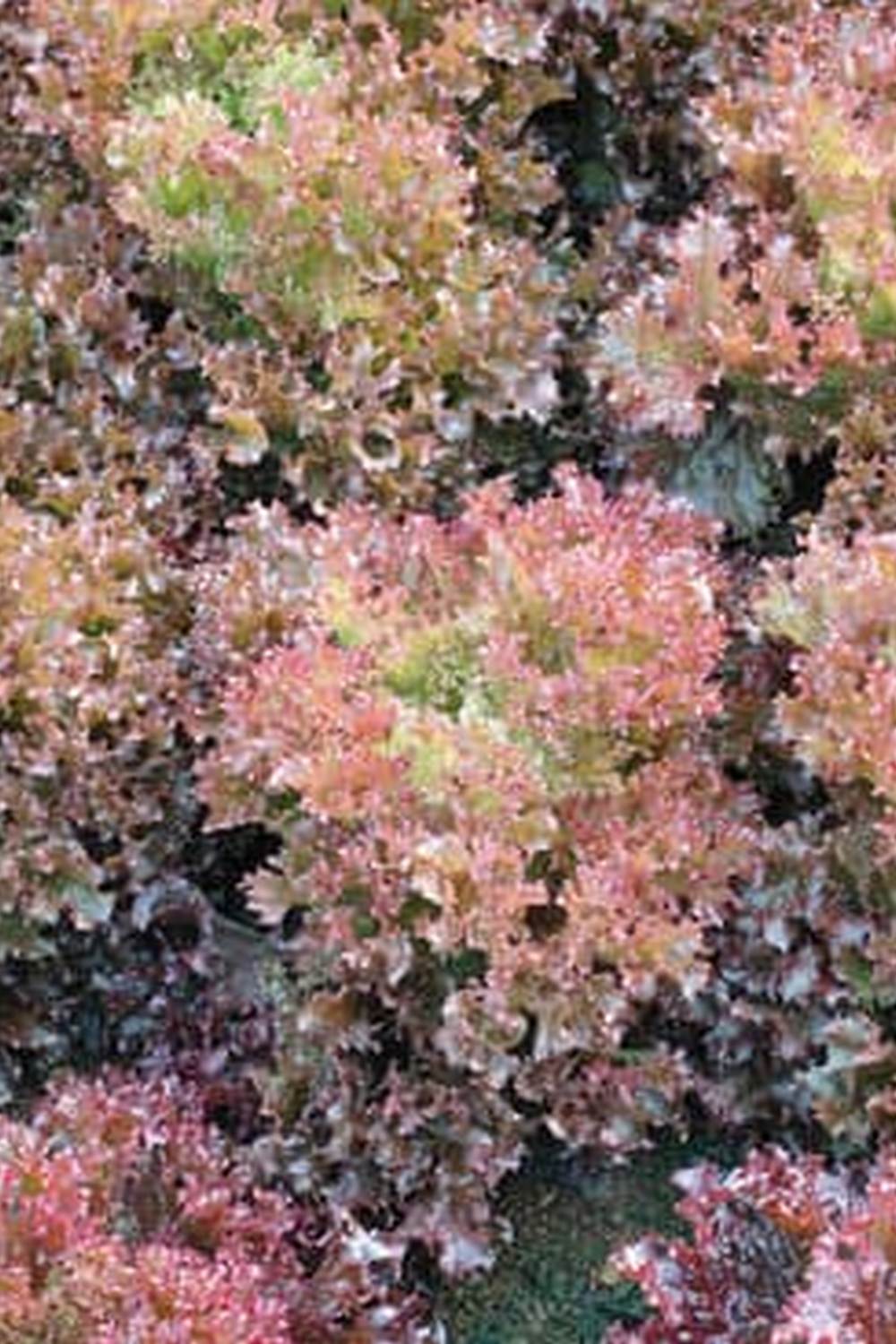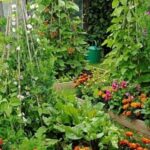Are you interested in starting a vegetable gardening blog in Texas? Whether you are a seasoned gardener or just getting started, there are several important factors to consider when growing vegetables in the Lone Star State.
From the unique climate and growing conditions to dealing with pests and diseases, successful vegetable gardening in Texas requires careful planning and knowledge of local resources. In this article, we will explore tips for success, best vegetables to grow, essential tools and equipment, and must-try techniques for Texas vegetable gardening.
One of the first things to consider when starting a vegetable gardening blog in Texas is the climate. The state’s diverse geography and varying climate zones can present both opportunities and challenges for gardeners. Understanding which vegetables thrive in the hot summers and mild winters of Texas is crucial for a successful harvest. Additionally, knowing the specific requirements of each plant based on the region within Texas is important for producing healthy and abundant crops.
In addition to climate considerations, understanding the local growing season is essential for planning your vegetable garden. With its long growing season in some areas and shorter season in others, it’s important to know when to start seeds indoors, when to transplant seedlings outdoors, and when to expect your harvest.
Successful gardeners also need to be prepared for common pests and diseases that affect vegetable plants in Texas. By being proactive with preventative measures and familiarizing yourself with organic methods of control, you can keep your plants healthy throughout the growing season.
Best Vegetables to Grow in Texas Climate
When it comes to vegetable gardening in Texas, choosing the right vegetables to grow is crucial for a successful harvest. The climate in Texas can vary greatly depending on the region, with hot summers and mild winters being common throughout the state. Therefore, it’s important to select vegetables that are well-suited to these conditions.
Warm-Season Vegetables
For the warm season in Texas, which typically lasts from late spring to early fall, consider growing vegetables such as tomatoes, peppers, cucumbers, squash, okra, and sweet potatoes. These vegetables thrive in the heat and can produce bountiful yields when properly cared for.
Cool-Season Vegetables
During the cooler months in Texas, from late fall to early spring, cool-season vegetables like lettuce, spinach, kale, carrots, radishes, and broccoli can be successfully grown. These vegetables prefer milder temperatures and can even withstand light frosts, making them ideal choices for winter gardening in Texas.
Adapted Varieties
When selecting vegetable varieties for your Texas garden, look for those that are specifically adapted to the region’s climate. Some nurseries and seed companies offer “Texas-friendly” or “heat-tolerant” varieties of popular vegetables that have been bred to perform well in the state’s unique growing conditions.
By focusing on warm-season and cool-season vegetables that are well-suited to the Texas climate and selecting adapted varieties whenever possible through local nurseries or online resources such as a vegetable gardening blog texas, you can increase your chances of a successful harvest and enjoy a thriving garden throughout the year.
Tips for Success in Texas Vegetable Gardening
When it comes to vegetable gardening in Texas, there are some tips and tricks that can help ensure success in growing a bountiful and healthy harvest. The unique climate and soil conditions in Texas present challenges for gardeners, but with the right approach, it is possible to achieve great results.
Choose the Right Varieties
One important tip for success in Texas vegetable gardening is to choose the right varieties of vegetables that are well-suited for the climate and growing conditions. Look for heat-tolerant and disease-resistant varieties that will thrive in the hot and often humid Texas weather. Some popular choices for Texas gardeners include okra, peppers, tomatoes, and black-eyed peas.
Water Wisely
In a state known for its hot summers, proper watering is key to successful vegetable gardening. It’s important to water consistently and deeply, especially during periods of extreme heat. Installing a drip irrigation system or soaker hoses can help ensure that your plants receive the consistent moisture they need without wasting water.
Protect Your Plants
Texas can experience extreme weather events such as hail storms and strong winds. To protect your vegetable garden from these potential hazards, consider using row covers or planting windbreaks around your garden. In addition, providing shade during the hottest parts of the summer can help prevent sunscald on your plants.
By following these tips and implementing best practices for vegetable gardening in Texas, you can increase your chances of a successful harvest while minimizing potential challenges. For more expert advice and tips specific to Texas vegetable gardening, be sure to check out our recommended vegetable gardening blog texas or connect with local nurseries and gardening clubs in your area.
Essential Tools and Equipment for Texas Vegetable Gardening
When it comes to vegetable gardening in Texas, having the right tools and equipment can make a significant difference in the success of your garden. With the hot and often dry climate of Texas, it’s important to have the right tools to help you efficiently manage your garden and ensure the health and productivity of your plants.
One essential tool for Texas vegetable gardening is a sturdy, high-quality hose and watering system. With the intense heat and occasional drought conditions in Texas, proper watering is crucial for the health of your vegetables. Investing in a good quality hose with adjustable nozzles or a drip irrigation system can help you conserve water while ensuring that your plants receive adequate moisture.
Another important piece of equipment for Texas vegetable gardening is a reliable set of hand tools, such as trowels, pruners, and hand cultivators. These tools will come in handy for planting seeds, transplanting seedlings, pruning, and weeding. Look for tools with ergonomic handles to make them comfortable to use during long hours of garden work.
In addition to hoses and hand tools, investing in quality soil amendments such as compost and mulch is essential for successful vegetable gardening in Texas. The hot climate can quickly deplete soil nutrients, so regularly adding organic matter to your soil can help maintain its fertility and structure. Mulch also helps conserve moisture and suppress weed growth in your garden beds.
As you embark on your vegetable gardening journey in Texas, be sure to equip yourself with these essential tools and equipment. By having the right supplies on hand, you’ll be well-prepared to tackle the unique challenges and opportunities of growing vegetables in the Lone Star State.
If you want more information about essential tools for vegetable gardening in Texas be sure to visit our vegetable gardening blog texas for more tips and advice on how best expend yout time on what matters most.
Dealing With Common Pests and Diseases in Texas Vegetable Gardens
When it comes to vegetable gardening in Texas, dealing with common pests and diseases is a top concern for gardeners. The warm, humid climate of Texas can create the perfect conditions for various pests and diseases to thrive. Some of the most common pests that Texas gardeners may encounter include aphids, caterpillars, and squash bugs. These pests can quickly damage or destroy a vegetable garden if not properly managed.
In addition to pests, Texas vegetable gardens are also susceptible to a range of diseases such as powdery mildew, blossom end rot, and early blight. These diseases can affect a variety of vegetable plants including tomatoes, peppers, and cucumbers. It’s important for Texas gardeners to be able to identify these diseases early on and take the necessary steps to prevent their spread.
One effective way to manage pests and diseases in a Texas vegetable garden is through integrated pest management (IPM) techniques. This approach emphasizes prevention and uses a combination of biological controls, cultural practices, and minimal pesticide use. By practicing good sanitation, crop rotation, and selecting disease-resistant varieties, Texas gardeners can minimize the impact of pests and diseases on their vegetable crops.
| Common Pests | Common Diseases |
|---|---|
| Aphids | Powdery Mildew |
| Caterpillars | Blossom End Rot |
| Squash Bugs | Early Blight |
Understanding the Texas Growing Season for Vegetables
When it comes to vegetable gardening in Texas, understanding the growing season is crucial for a successful harvest. The climate in Texas varies by region, but in general, the state has a long growing season with hot summers and mild winters. Knowing the specific growing season for different vegetables can help gardeners plan their planting schedule and maximize their yields.
In Texas, the growing season for vegetables typically begins in early spring, around late February or early March, and extends through the fall until early November. However, it’s important to note that the growing season may vary slightly depending on the specific climate and region within Texas. For example, South Texas has a longer growing season compared to North Texas due to its milder winters.
To make the most of the extended growing season in Texas, here are some must-try vegetable gardening techniques:
- Succession planting: Planting crops in intervals to ensure a continuous harvest throughout the growing season.
- Season extension: Using techniques such as row covers or hoop houses to protect plants from temperature extremes and extend the growing season.
- Container gardening: Utilizing containers and raised beds to control soil temperatures and provide flexibility in moving plants indoors during extreme weather.
Understanding the specific nuances of the Texas growing season is essential for planning a successful vegetable garden. By taking advantage of the extended warm weather and employing suitable gardening techniques, gardeners can enjoy bountiful harvests of fresh vegetables throughout much of the year. For further guidance on navigating the unique aspects of vegetable gardening in Texas, there are numerous resources available such as local nurseries, gardening clubs, and online communities dedicated to supporting gardeners in their endeavors.
5 Must-Try Vegetable Gardening Techniques for Texas
When it comes to vegetable gardening in Texas, it’s essential to utilize techniques that are well-suited for the unique climate and growing conditions. Here are 5 must-try vegetable gardening techniques for Texas:
1. Raised Bed Gardening: Due to the heat and potential for poor soil quality in Texas, raised bed gardening can be a highly effective technique. This method allows for better control of soil quality, drainage, and overall plant health.
2. Mulching: Given the hot temperatures in Texas, mulching is a crucial technique for retaining soil moisture and preventing evaporation. Organic mulch such as straw or wood chips can also help regulate soil temperature and suppress weed growth.
3. Drip Irrigation: Efficient water usage is important in Texas, where water conservation is often a concern. Drip irrigation systems deliver water directly to the base of plants, reducing water loss through evaporation and minimizing weed growth.
4. Companion Planting: In the Texas climate, companion planting can help maximize space and naturally repel pests. For example, pairing tomatoes with basil can improve tomato flavor and deter pests like aphids or hornworms.
5. Succession Planting: With the extended growing season in many parts of Texas, succession planting can help ensure a continuous harvest of fresh produce throughout the year. By planting new crops as others are harvested, gardeners can make the most of their available space and extend their growing season.
Utilizing these vegetable gardening techniques specific to Texas can help gardeners overcome challenges related to climate, water conservation, and soil quality while maximizing productivity in their gardens.
For more tips and advice on successful vegetable gardening in Texas, be sure to check out reputable resources such as local nurseries, gardening clubs, and online communities dedicated to vegetable gardening blog texas enthusiasts.
Resources for Texas Vegetable Gardeners
In conclusion, there are plenty of resources available for vegetable gardeners in Texas to help them succeed in their gardening endeavors. Local nurseries offer a wide variety of seeds and plants suited to the Texas climate, while gardening clubs provide a sense of community and opportunities to learn from experienced gardeners.
Additionally, online communities such as forums and social media groups allow gardeners to connect with one another, share tips and advice, and troubleshoot any issues they may encounter in their own gardens.
Whether you’re new to vegetable gardening or have been growing your own produce for years, it’s important to take advantage of these resources to enhance your gardening experience. By tapping into the knowledge and expertise of local nurseries, gardening clubs, and online communities, you can access valuable information that will help you select the best vegetables for your Texas garden, navigate the challenges of the local climate, and implement successful gardening techniques.
Ultimately, with the support of these resources and a little trial and error, you can develop a thriving vegetable garden that yields an abundance of fresh produce year after year. So don’t hesitate to reach out to your local nursery, join a gardening club in your area, or connect with fellow gardeners through online communities-all of which can enrich your vegetable gardening journey in Texas.
And if you’re looking for even more tips and inspiration specific to Texas vegetable gardening, be sure to explore reputable blogs dedicated to this topic-such as our very own vegetable gardening blog Texas.
Frequently Asked Questions
What’s the Easiest Vegetable to Grow in Texas?
The easiest vegetable to grow in Texas is okra. Okra thrives in the hot and dry climate of Texas, making it a relatively low-maintenance and abundant crop for home gardeners.
When Should I Start a Vegetable Garden in Texas?
In Texas, it’s best to start a vegetable garden in late February or early March, depending on the specific region. This timing allows the soil to warm up and offers a longer growing season before the intense summer heat arrives.
What Vegetables Grow Best in Texas Heat?
Some vegetables that grow best in Texas heat include peppers, tomatoes, eggplants, sweet potatoes, cucumbers, and squash. These plants are well-suited to handle the high temperatures and sun exposure common in Texas during the summer months.

If you’re looking to get into vegetable gardening, or are just looking for some tips on how to make your current garden better, then you’ve come to the right place! My name is Ethel and I have been gardening for years. In this blog, I’m going to share with you some of my best tips on how to create a successful vegetable garden.





